At the Prince of Travel Signature Event Vancouver 2021, Aeroplan’s executives indicated that they intended to publish more transparently the rules that govern routings and stopovers under the new program.
This document has gone live as of this week in the form of an updated Flight Reward Policy. In the continued absence of the ability to book stopovers online by ourselves, we’ll take any clarity that we can get when it comes to the finer details of these routing rules, so let’s delve into the new parts of this document to take a look around.
It’s important to emphasize that the updated Flight Reward Policy only clarifies existing rules that have been in place since the program’s launch, and that no rules have actually changed with its publication.
Fees & General Policy

The $30 phone booking fee and $39 partner booking fee are well-known to us. However, I find it interesting that this section of the document states:
In the instance where a Flight Reward reservation cannot be completed online, the reservation will still be subject to the Contact Centre service fee.
This appears to overlook the exclusion for the $30 phone booking fee on flight rewards that have a stopover, which kicked in as of October 2021 – perhaps reflecting that it’s very much a temporary exclusion during the interim period before stopovers are bookable online.
Reservation Maximums

As with many of the following sections, this section puts in writing the information that we had gleaned at the time of the new Aeroplan’s announcement in August 2020 in our “New Aeroplan Mini-RTW: A New Generation of Complex Trips” article.
Specifically, a single reservation is permitted up to six “one-way bounds” (formally known as “directions of travel”), although is limited to 12 flight segments overall.
Stopovers
The maximum duration of 45 days on stopovers is officially put in writing for the first time. Furthermore, the document provides a series of helpful examples to understand how the stopover policy works in different situations.
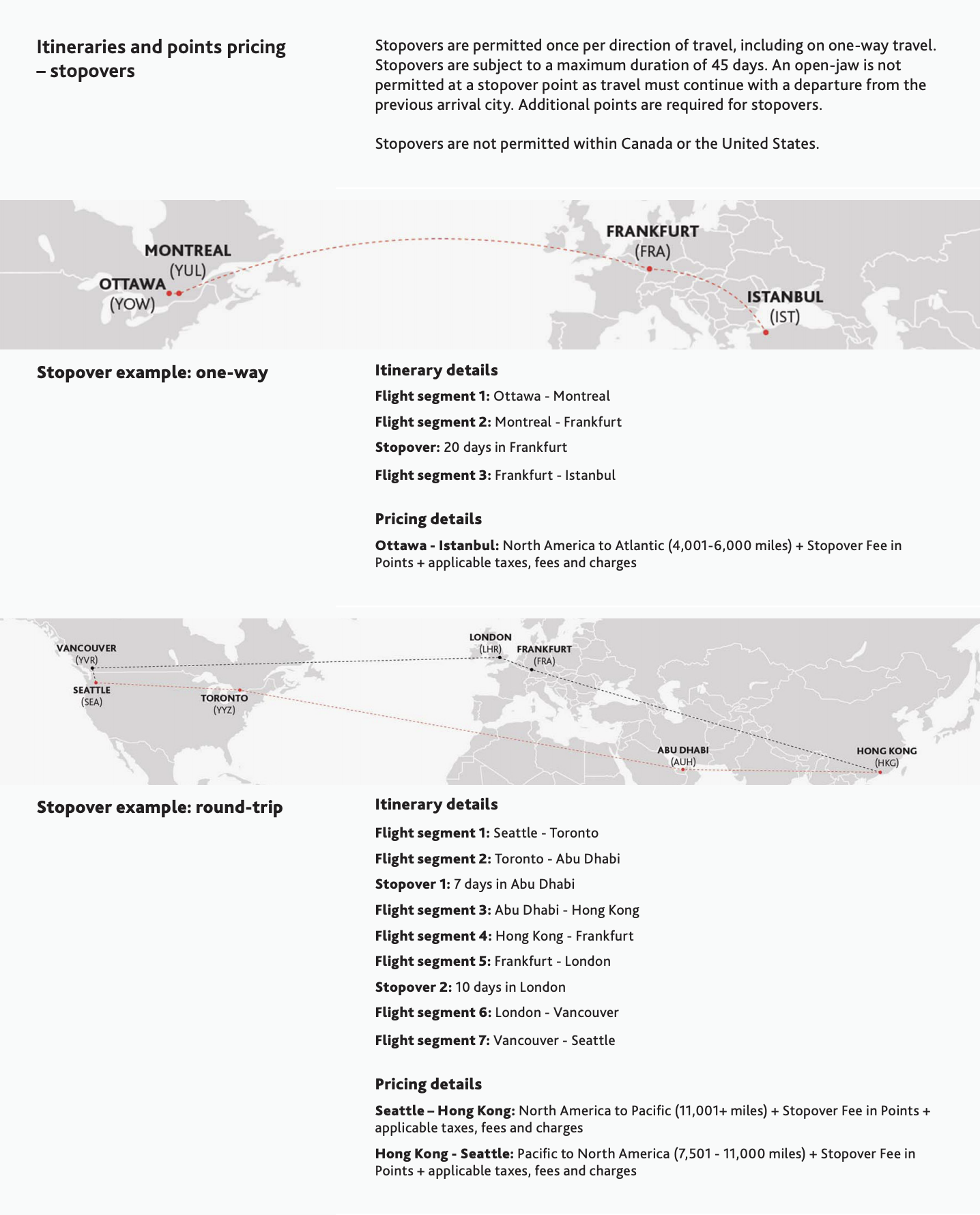
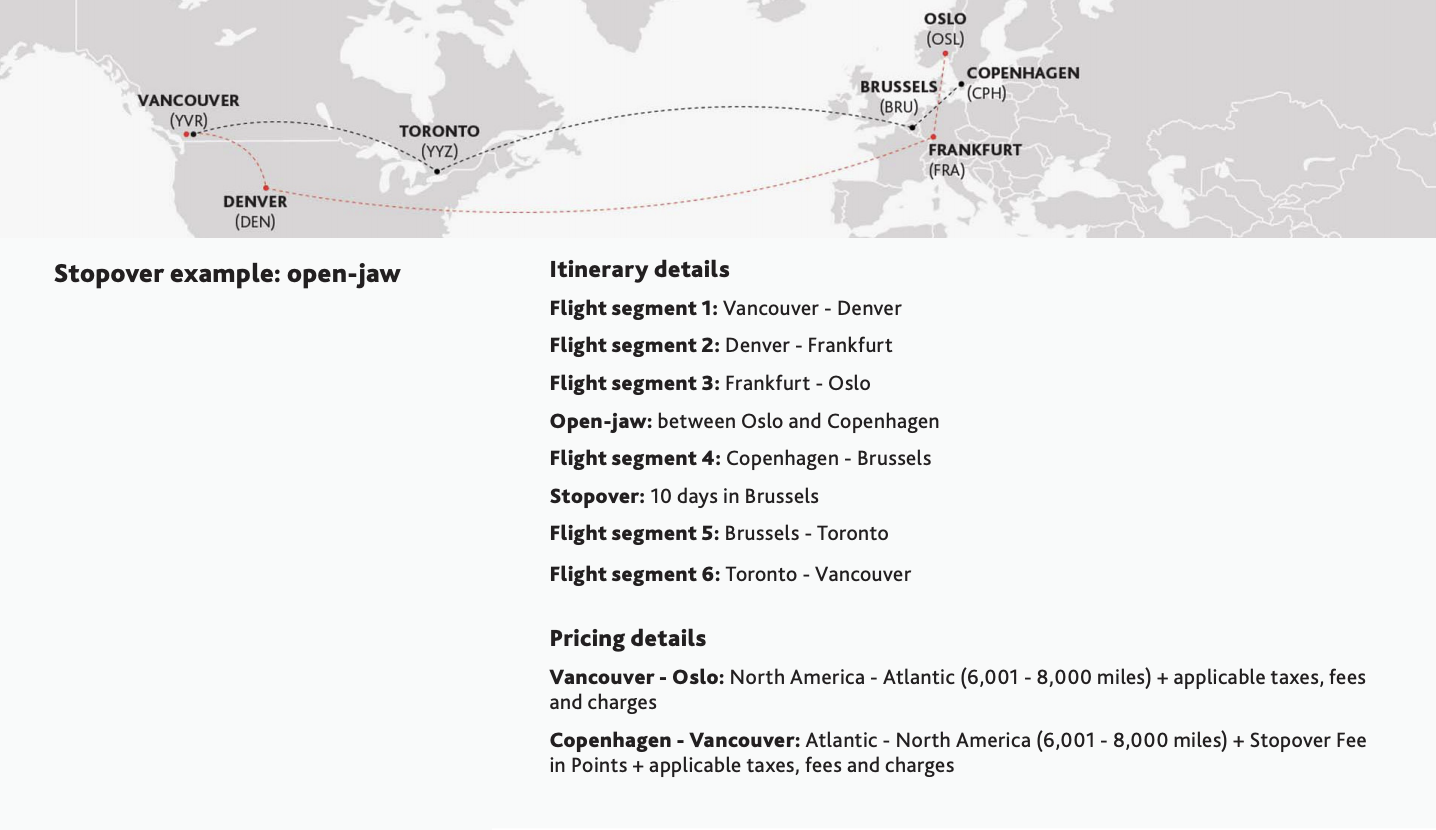
For even more examples on how all of this works, refer to our August 2020 exposé on the subject (fancy Air Canada-themed maps not included).
Connecting Times
Here’s something that I actually feel we had lacked clarity on thus far: how long can a connection at a layover point be, before it counts as a stopover?
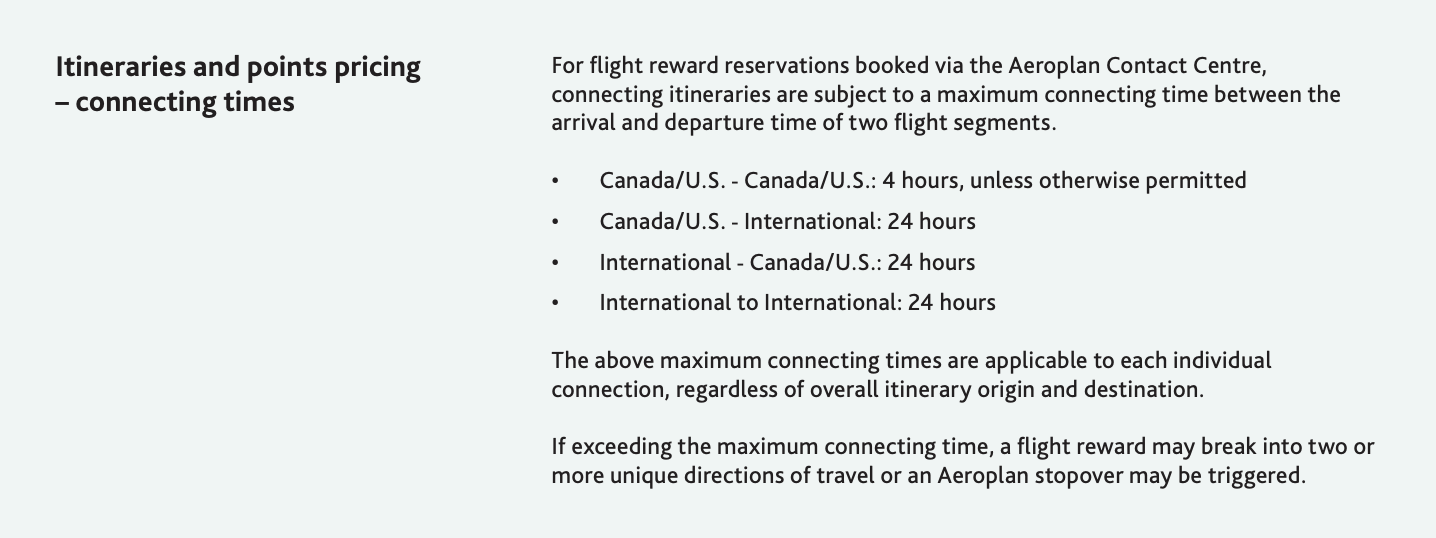
Well, the answer is of course 24 hours, unless you’re connecting from one flight within Canada or the US to another flight within Canada or the US.
If that’s the case, then the limit is four hours before it would become a stopover (and since stopovers aren’t permitted in Canada or the US, it becomes priced as a separate direction of travel).
What does the term “unless otherwise permitted” encompass? My understanding is that it allows for overnight connections within Canada or the US that represent the last flight in on the previous evening and the first flight out the next morning, even if they are longer than four hours in duration.
The first example given in the document helps to illustrate this. Since the stop in Vancouver on a Victoria–Vancouver–Toronto series of segments is longer than four hours, it breaks the award into two separate one-way bounds that are each individually priced.
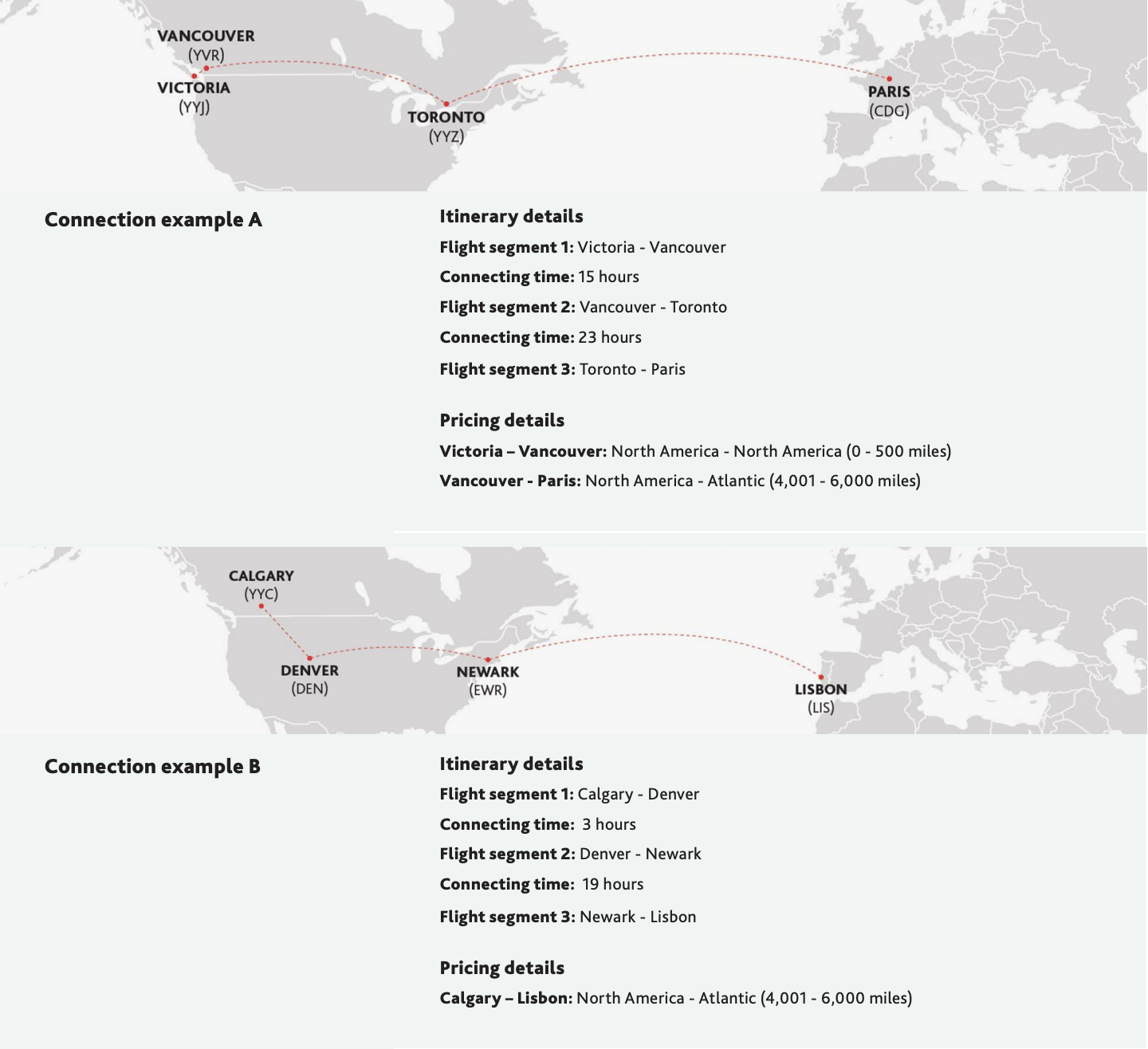
Meanwhile, stopovers of up to 24 hours are not a problem anywhere else in the world.
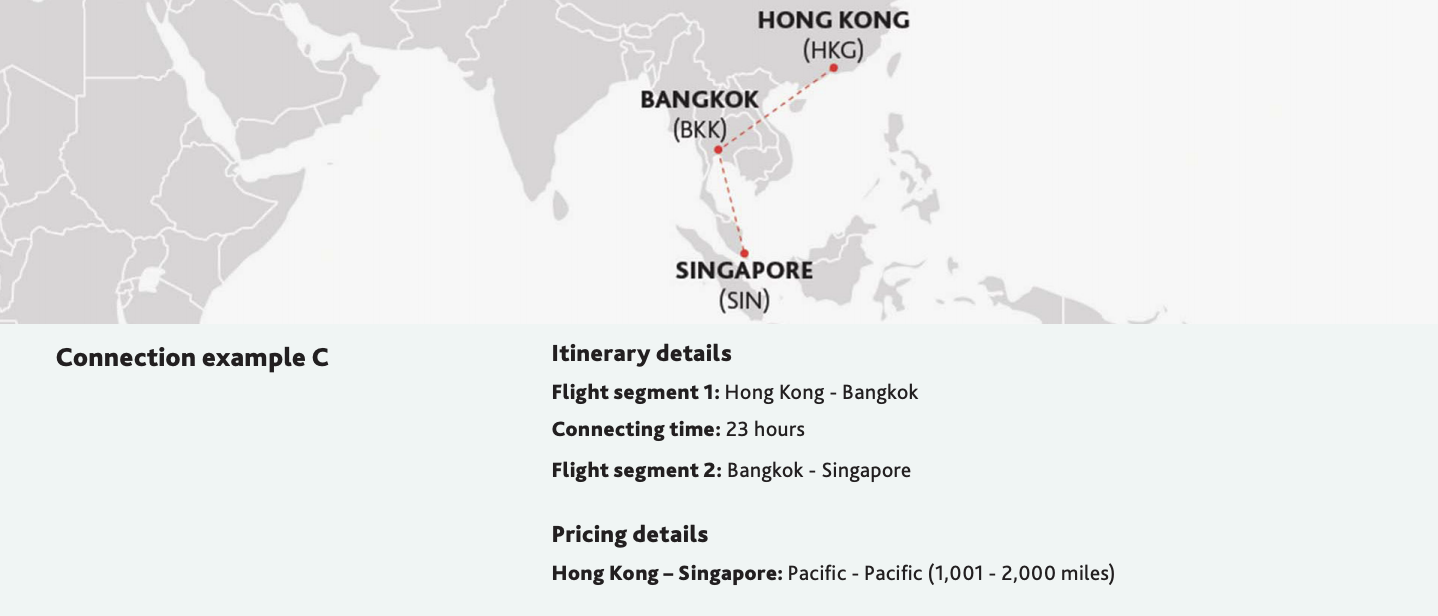
Routing Validation
Here’s where we get to the fun part: weaving complex itineraries around the world and thinking about all the edge cases that arise.
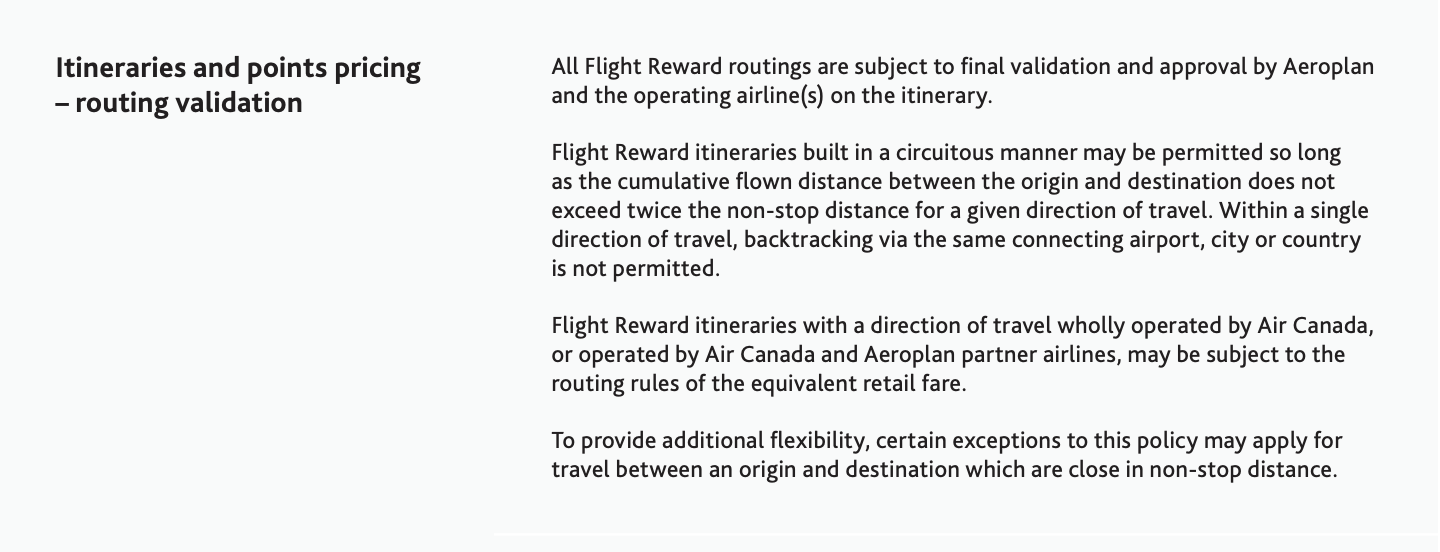
It’s very interesting to see the “illustrative rule of thumb of 100% over the direct distance” formally spelt out:
Flight Reward itineraries built in a circuitous manner may be permitted so long as the cumulative flown distance between the origin and destination does not exceed twice the non-stop distance for a given direction of travel. Within a single direction of travel, backtracking via the same connecting airport, city or country is not permitted.
This paragraph is also worth expanding upon:
Flight Reward itineraries with a direction of travel wholly operated by Air Canada, or operated by Air Canada and Aeroplan partner airlines, may be subject to the routing rules of the equivalent retail fare.
Whenever an Air Canada flight is included in a one-way bound, it may result in additional routing restrictions between the start and end points of the one-way bound based on the routing rules of underlying Air Canada cash fare.
Some Aeroplan members have reported difficulties combining Air Canada flights with certain partner itineraries on the same one-way bound – this may well be the reason why.
For example, let’s say you want to fly from Toronto to Bangkok via Washington, Abu Dhabi, and Bahrain on a combination of Air Canada, Etihad Airways, and Gulf Air.
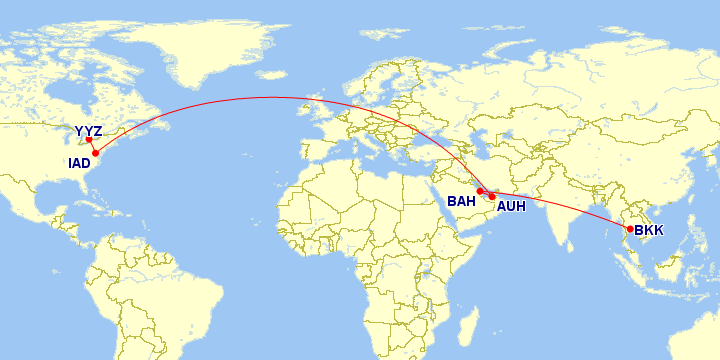
You may have difficulty adding that first Air Canada segment on the same bound as the rest of the flights. That’s because Air Canada’s underlying retail fares on the Toronto–Bangkok route may not permit routing through Abu Dhabi and Bahrain of all places.
If you were to swap that first Air Canada flight with a United flight on the same Toronto–Washington, then you’d have no trouble combining everything together, since all-partner itineraries are not subject to underlying retail fares’ routing rules.
Finally, the policy allows for exceptions to the “twice the non-stop distance” rule, and gives the example of an itinerary that’s valid even though it exceeds 200% of the direct distance.

These exceptions are generally intended to allow travel between two points that are geographically close, but have limited routing options besides connecting through a more distant hub.
Travel Within a Zone
When travelling within one of Aeroplan’s four geographic zones, connecting via a third zone generally isn’t allowed. However, there are “certain limited exceptions” to provide additional flexibility when one of the endpoints border another zone.

About a year ago, we had first delved into Aeroplan’s complex routing policies shortly after the new program’s relaunch by relentlessly calling the call centre to figure out which routings were allowed and which were not.
Based on our findings there, some of these “limited exceptions” might include things like:
- Toronto–Bogotá–Panama City, which is a valid routing within the North America zone
- São Paulo–Panama City–Bogotá, which is a valid routing within the South America zone
- Seoul–Abu Dhabi–Sydney, which is a valid routing within the Pacific zone (although I’m not sure how either Seoul or Sydney constitutes “[bordering] a travel zone”)
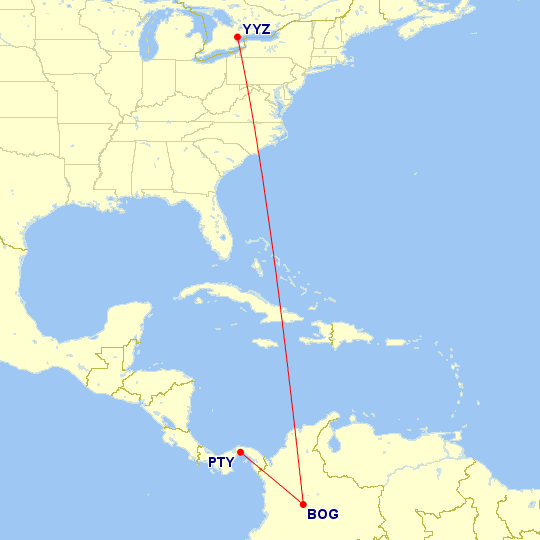
Travel Between Two Zones
When travelling from one of Aeroplan’s four geographic zones to another, connecting through a third zone is generally permitted if it meets all of the other conditions.

However, a list of three exceptions are provided. You can’t fly something like Los Angeles–Tokyo–Frankfurt, nor Vancouver–Hong Kong–Abu Dhabi, nor Toronto–Lisbon–São Paulo, even though all of these routings otherwise satisfy the “twice the non-stop distance” rule.
And yet, I believe this list of exceptions may be incomplete. In theory, since Africa isn’t mentioned, there’d be nothing preventing you from flying between North America and Africa via the Pacific Ocean on a routing like Vancouver–Tokyo–Cairo or Vancouver–Tokyo–Addis Ababa.
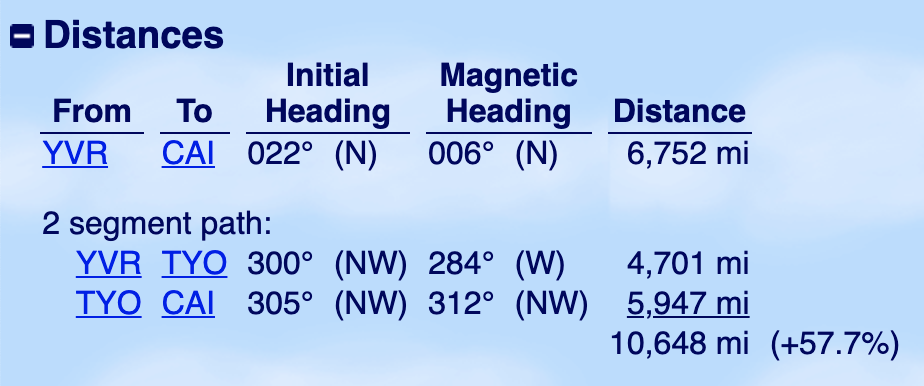
However, we gave the Aeroplan contact centre a try and spoke to 12 different agents, none of which were able to piece these together on a single one-way bound (and all 12 agents refused to double-check with the help desk, citing 1.5-hour wait times on a matter that was purely of academic interest).
We’ll be following up with Aeroplan to clarify whether there ought to be an Africa exception listed too, and will update this section when we know more.
Still, it’s good to see that the previously undisclosed exceptions on routing restrictions have now been communicated more transparently.
Priority Rewards
One particular bullet point under the Priority Rewards section of the Flight Reward Policy isn’t technically new, though I wanted to mention it here (it was introduced in early 2021 instead of just this week):

This was introduced as a response to a section of our “How to Maximize Aeroplan’s Priority Rewards” article that was published late last year.
We had worked with an Aeroplan call centre agent to book a series of embedded round-trip flights on the same itinerary and apply a Priority Reward voucher to the whole thing, effectively getting a 50% discount on three trips instead of one.
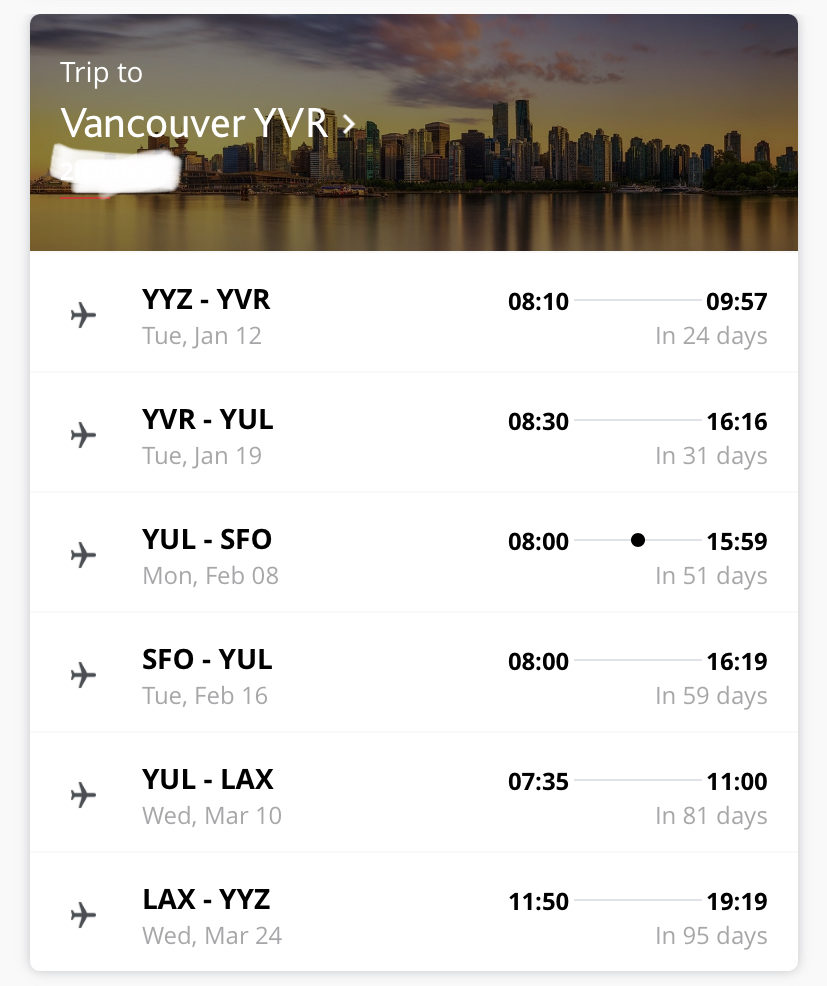
Now, here’s where I do have to hold my hands up and say it probably wasn’t a good idea to discuss this little workaround so openly, and perhaps would’ve been a better fit for our members instead. I mean, three 50%-off round-trips for the price of one… come on.
Still, our efforts demonstrated that the ticketing system does indeed allow Priority Rewards to be used on such itineraries, even if Aeroplan’s call centre agents – who, as we know, tend to exhibit a wide range of skill and diligence – have now been reminded not to book them under this new bullet point.
Conclusion
I appreciate that Aeroplan has stood by its commitment of transparency to its members and clarified some of the routing, connection, and stopover policies.
Although there are still one or two outstanding questions to resolve, by and large, the expanded Flight Reward Policy should give you a clearer idea of which proposed routings would be accepted and which wouldn’t.
However, until we get the ability to book stopovers ourselves online (currently scheduled for 2022, though who knows at the pace things are going), we’ll unfortunately still need to play call centre roulette and hope to find a competent agent who can process the complex booking successfully.
Feel free to browse through the updated Aeroplan Flight Reward Policy for yourself.




















Hello Rick,
So, is it possible to travel from North America to Africa while connecting in Atlantic/Pacific ?
Although there are no documents saying you can’t transit the Pacific Zone enroute to Africa, in practice, it’s not impossible via the call centre. Transiting the Atlantic Zone is fine.
Does the Priority Award fine print actually cover what you did in your booking? Your trip doesn’t include further travel after YYZ, there’s no two flights with the same origin and destination, and there’s no more than 1 RT itinerary (I only count 1 which is YUL-SFO-YUL), unless you count the multicity mess of YYZ-EVERYWHERE ELSE-YYZ.
And if you swapped SFO-YUL and YUL-LAX for SFO-YOW and YOW-LAX, it’s definitely only one RT. Just a very complicated multi-city. 🙂 Connecting though the origin might pose a problem however, especially if using a hub.
I believe AC interprets all the embedded open-jaw combinations as round-trips, so yes I basically have 5 round-trips embedded in the six bounds.
Either way, still worth playing some agent roulette if you’re truly looking to maximize. 😉